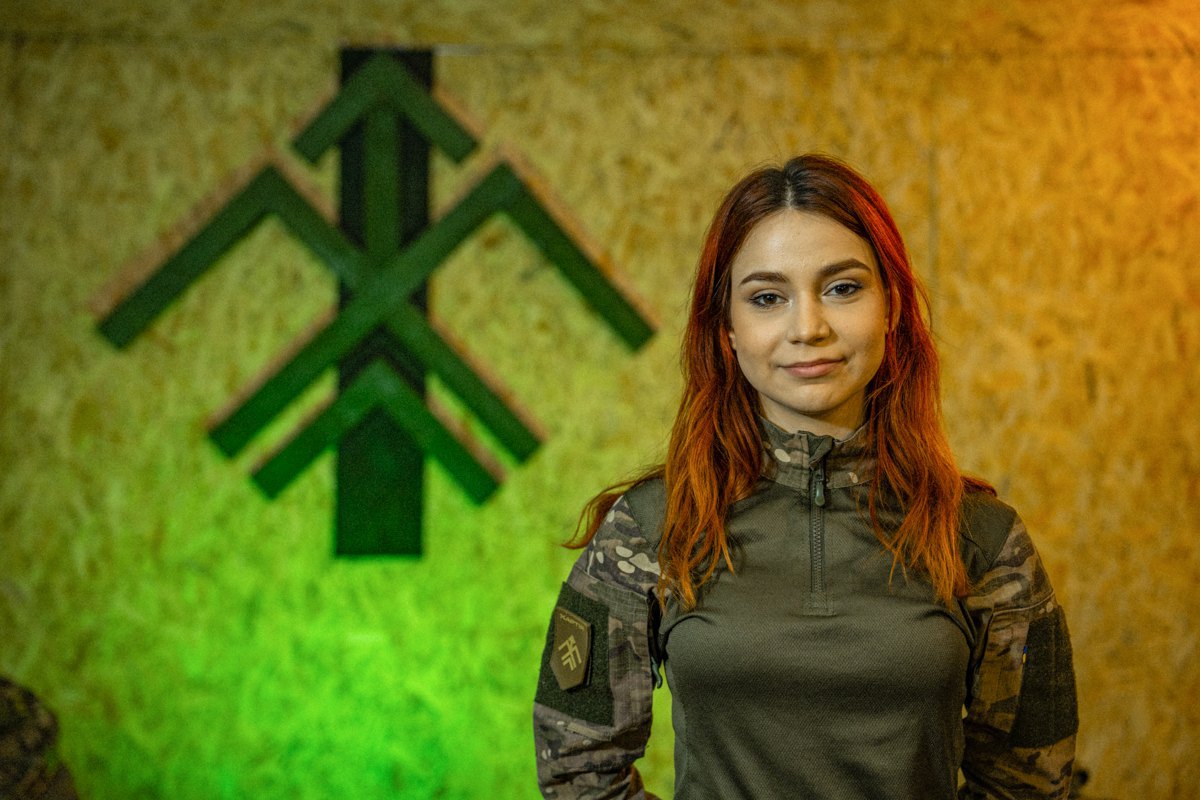
‘It is quite possible to learn this from scratch’
Jess, I haven't even learnt how to drive a car or a bicycle properly, and you have high-tech facilities. Is it difficult with them?
No, it's not difficult at all, I don't even know how to drive a car myself. Drones are much easier than bicycles (although there are nuances). In general, we are thinking about having veterans who want to continue their career in the military or military personnel who are unable to hold combat positions for health reasons become operators. There are many people who would like to continue fighting, but their health does not allow them to do so, so we need to involve these people. Because it is actually much easier to operate an GRS than a Mavic or FPV drone.
Why is it easier than an aerial drone?
In FPV, for example, there are four motors under each propeller, you need to take into account aerodynamics, control the height and tilt of the drone, but with a ground-based drone, you don't need all that. Two controllers - one on one side and one on the other, two wheels on each. It's as simple as it gets. We call it tank control (in video games, a way of controlling an object, if you want to go left, you first turn the character to the left and then press forward - Ed.) You just need to practice, to learn it properly. I practised for two months before I started the missions.
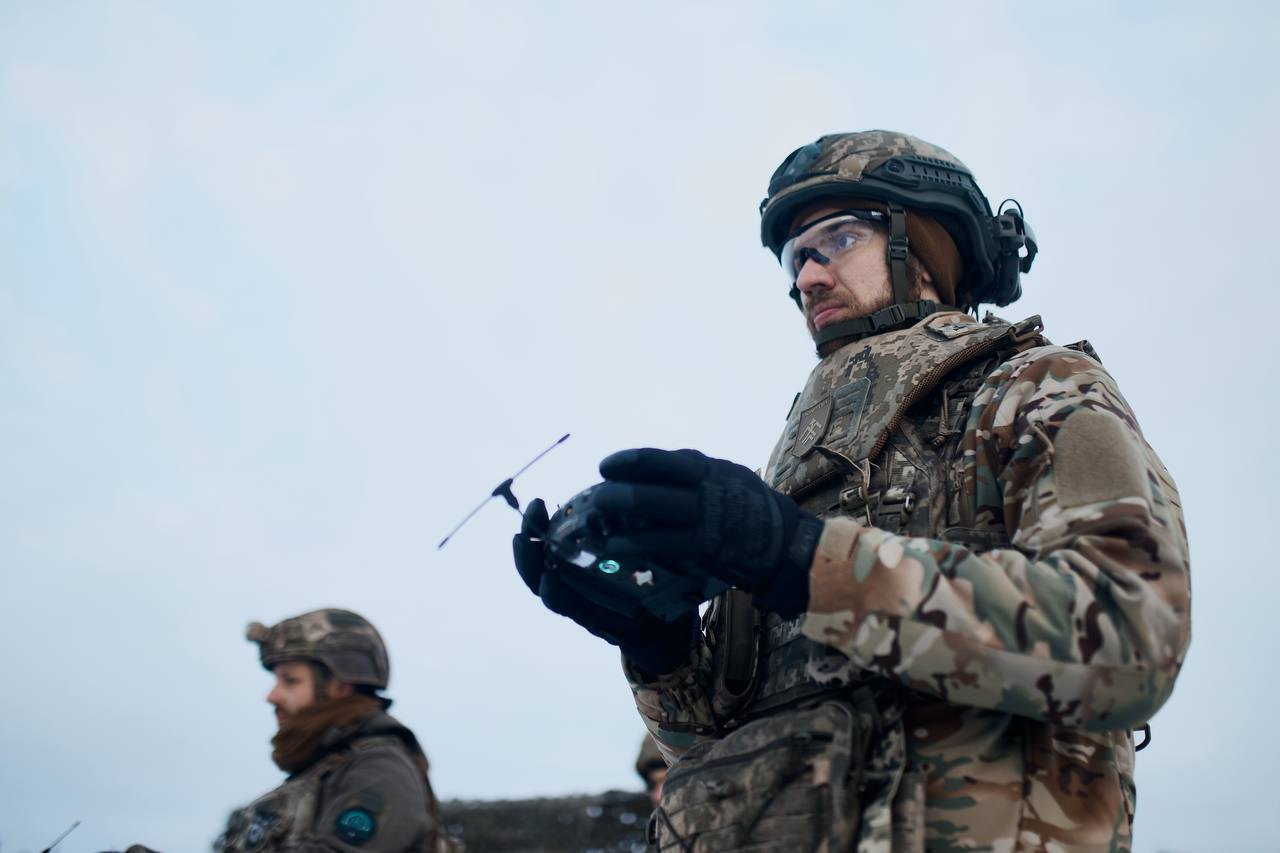
Where can you learn this? Does an experienced operator pass on his knowledge to his students?
We learn from each other: the less experienced one works in pairs with the more experienced one until they get the hang of it.
Did you immediately choose this particular area for yourself? Why and how did you decide to mobilise in the first place?
I immersed myself in the ideology of Ukrainian nationalism and became so charged with it that it was no longer enough for me to simply follow it in theory. I had an inner feeling that I was not doing enough. That the comfort we enjoy in civilian life comes at a high price. I decided that I was ready to sacrifice it to make a greater contribution to the common goal.
That was my motivation at the beginning. When you join the army and go through a certain path, you burn out a bit. This is a normal change that happens to every soldier. Motivation changes. What remains is discipline and understanding of how important what you do is for your comrades, for the people who are sitting on the ground waiting for your drone.
I am a doctor by training, and when I went to serve, I thought that they would not even give me a chance to try something else. But I was interested in drones and technology. I once saw a story about ground drones and decided it was promising, I should try it. I found the right person in the unit and managed to convince them that I would be effective. It was interesting, so I learnt everything quickly and am doing quite well. It is quite possible to learn this from scratch, I was not the only one.
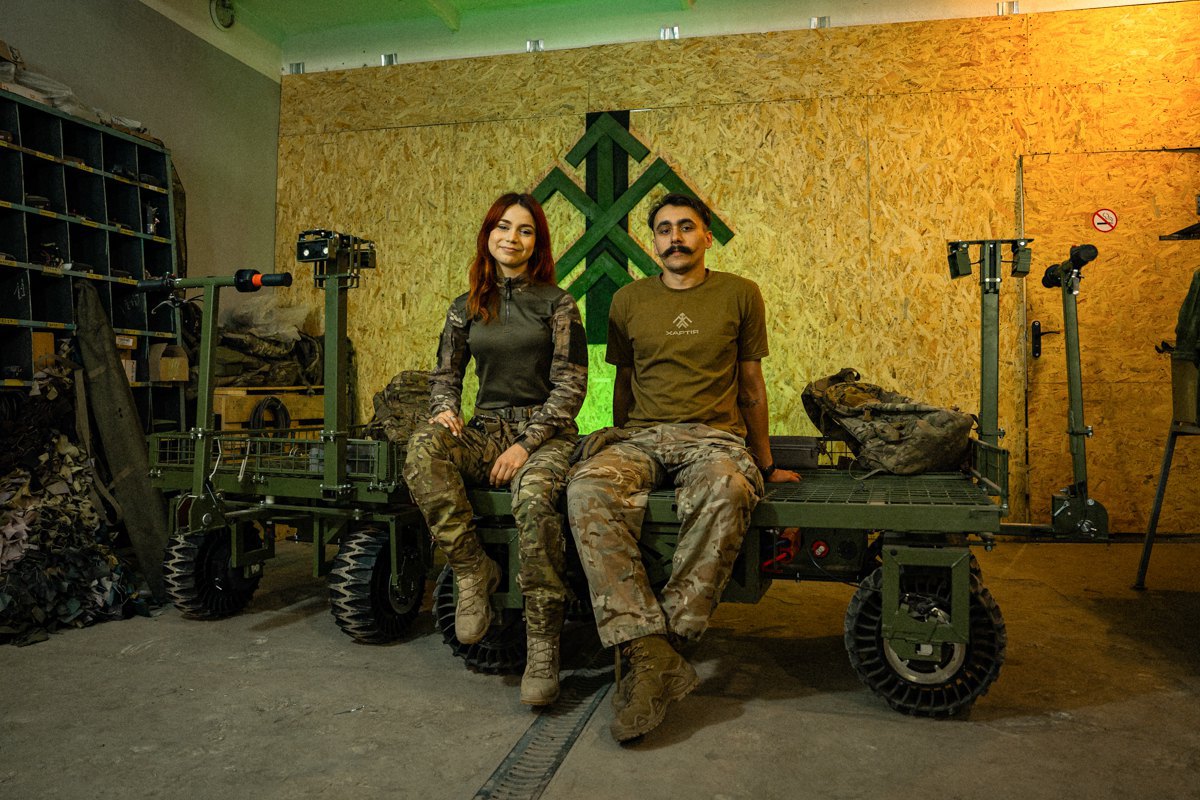
And it seems that you are not the only female drone operator at Khartiya?
We have a lot of girls as operators, but of UAVs. There are female Mavic and FPV operators. I am the only one in the GRS.
‘Innovative communication systems allow us to be as remote as possible.’
And where is the GRS operator physically located, how far from the contact line? Is it in relative safety?
Previously, ground-based drones used to communicate by radio, and operators were closer to the mission site. They would sit in dugouts, set up a mast, and raise a repeater so that the drone could keep a radio signal. Nowadays, radio communication has faded into the background, or even the third plan. There are innovative systems that allow us to be as remote as possible. For example, in Kharkiv or another city. We are not limited by distance and do not have to travel anywhere.
Back in the autumn or winter, robotic systems were seen as a rarity and a luxury. How has the situation changed?
We already have enough drones. And there are manufacturers who are trying to produce them for specific needs. It used to be that a standard product would arrive, and you had to modify it for yourself, install some modules. For example, an ordinary logistics drone is not suitable for evacuation, you need a module to put the wounded, some stretchers, bags, etc. It was all done by hand. And then manufacturers realised that there were narrow-profile requests and created ready-made modules for them. So there is no shortage of equipment.
But there is a certain shortage of operators. In our division, the same people who maintain the drones, install communication and control systems, set them up, then go on to become operators. It's exhausting, and it would be much better if operators only flew missions, while others established communication and set up. But so far, there are not enough people. We urge you to join us!
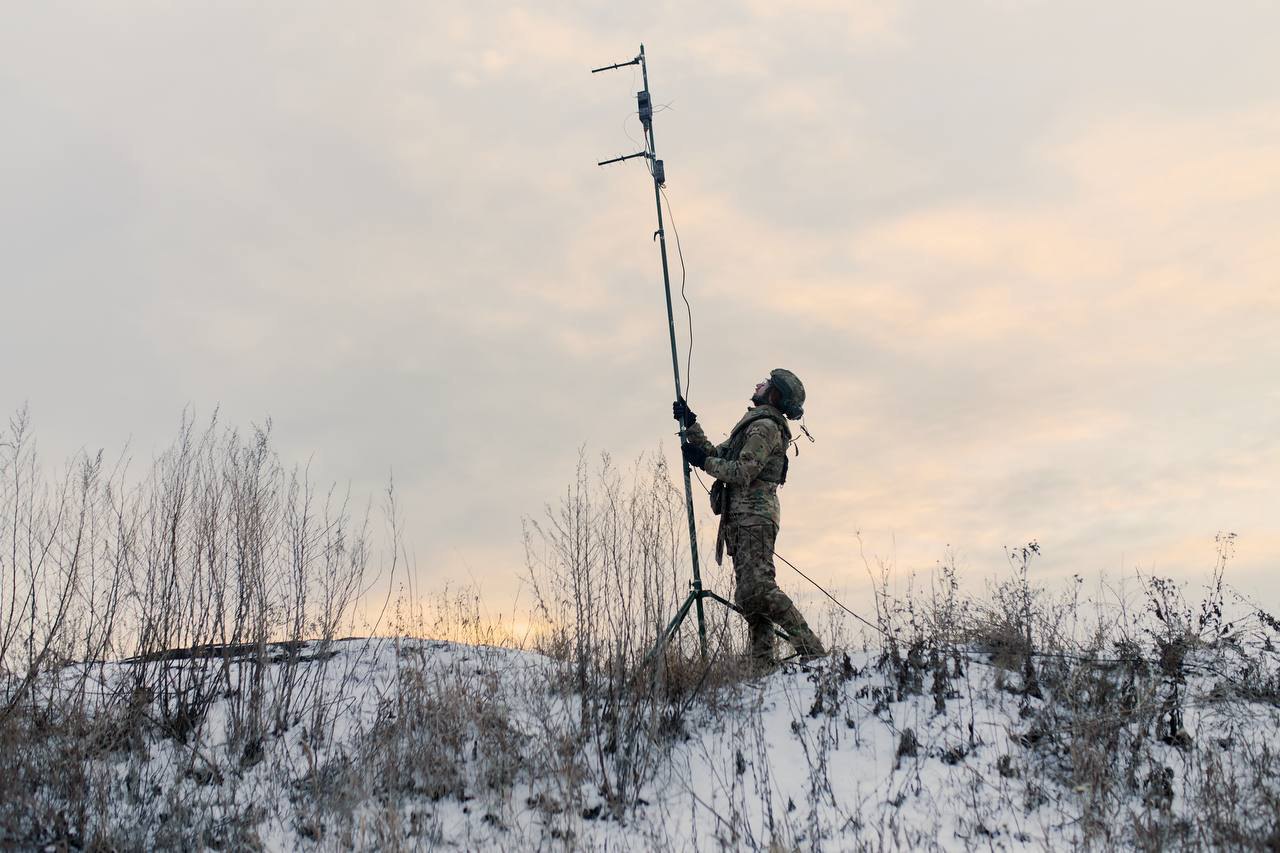
Are there any really good quality models of GRS? Until recently, industry experts claimed that there were a lot of offers, but there were few really good models with good tactical and technical characteristics that were worth contracting. Especially those that would be suitable for medical evacuation.
We have tried a lot of things, worked with many manufacturers and identified the main models we are interested in. We communicate closely with their manufacturers, are constantly in touch and advise us on how to do things better. We're talking about maybe five or six manufacturers who consistently produce high-quality drones for our needs. There are really a lot of them on the market, and to find something of high quality, you need to test it. It happens that the product itself is not bad, but manufacturers do not want to deviate from production standards and move forward. As I said, we are introducing new communication technologies and so on. Some people are comfortable with stamping as they used to. So we are looking for a complete solution.
To be enough for all purposes, how many varieties and models do you need? What tasks are they currently best suited for?
They are completely different, and it is better, of course, when you have a choice. Somewhere a tracked vehicle will do well, and somewhere a wheeled vehicle will do well. They vary greatly in size, load capacity, and range, and each time we select a specific drone for our task. But we also lose some, so sometimes we work with what we have.
They are best at logistics. Mine clearance has already been put on the back burner, and the most urgent and always in demand is transportation. Because the guys are always on the ground. There are drone pilots whose equipment breaks down, and we need to supply them with new ones. There are infantry who are sitting without water, food or ammunition, and we need to bring them up quickly. This is what we receive requests for every day, there are many of them, and they are a priority. Of course, after the wounded are taken out. We always keep drones for this purpose.
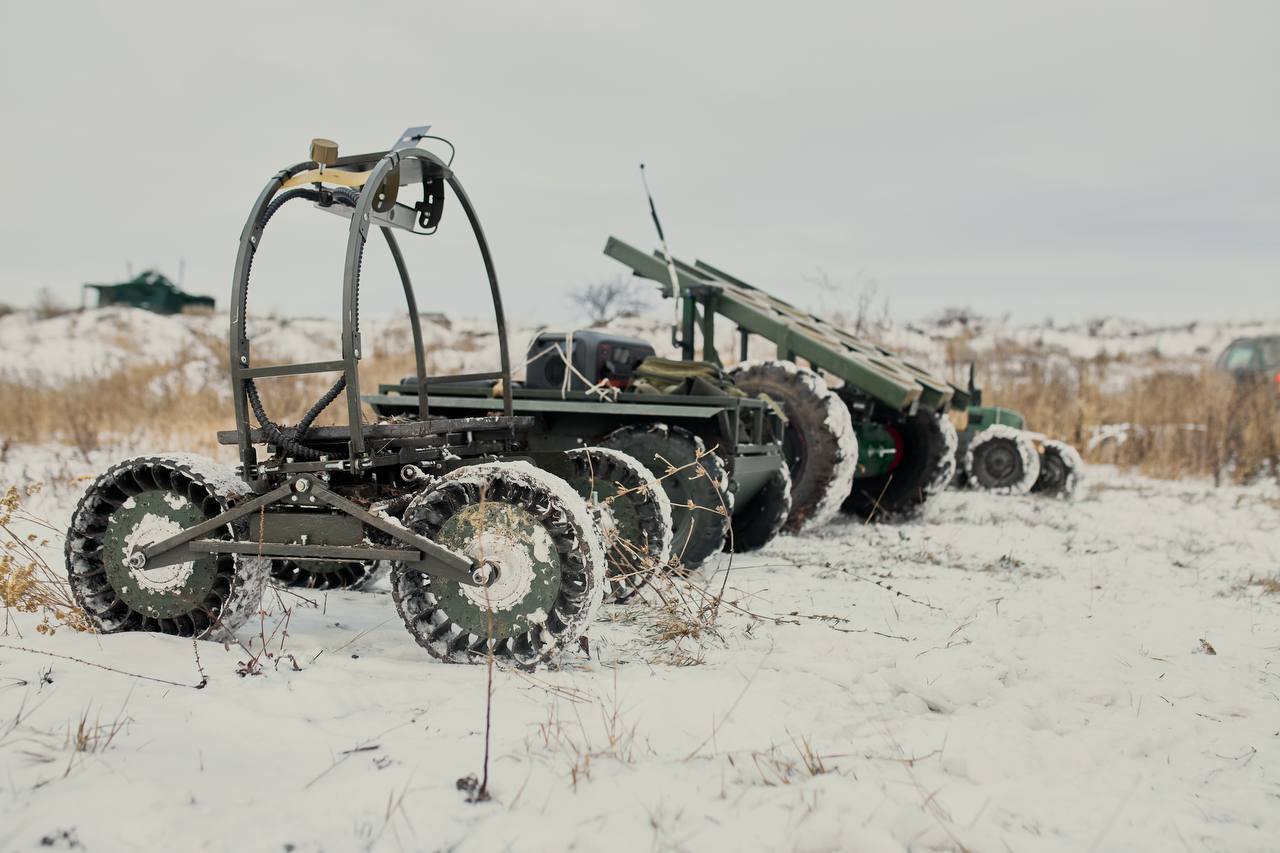
Medical evacuation — still a challenge? Not every GRS can handle it?
Success depends more on the people who prepare the drone specifically for medical evacuation. They equip it with stretchers, anti-thermal blankets, water, and medicines. In particular, it depends on the operator. When we transport cargo over potholes and mud, that's normal. But a wounded person must be transported very carefully, skilfully, avoiding every bump, without rushing. For the drone itself, transporting a person of average weight is an easy task. There are drones that can carry 600–700 kg. Nowadays, almost all of them are quite manoeuvrable and have a long range. Before we choose one, we test it. And if the range is less than 30 km, we don't use it for serious missions. It can fly around the neighbourhood, but when it comes to important tasks, we choose another one.
And what are the particularly complex and responsible missions?
This is when you have to do everything discreetly because there are enemy reconnaissance drones in the sky. When you are transporting a seriously wounded person, for example, with injuries to both legs, who cannot be shaken unnecessarily. And we were also crossing a bridge at the time, where we couldn't afford to make a mistake, because we would have lost the drone along with the person. The situations are tense and the routes are difficult. And even when you're just transporting water or a generator, you realise the responsibility. Because there are people somewhere who are waiting for them.
In fact, we rarely perform medical evacuations — usually the medevac gets to the wounded on its own and there is no need. Except when it cannot get close because it is too dangerous or there is a traffic ban because there are reconnaissance drones in the air and no one wants to risk people's lives. But that happens about three times a month.

‘Now we need robots that can shoot down enemy drones instead of mobile air defence units.’
To what extent have GRSs already changed the battlefield and taken over human functions?
The changes are already very noticeable. Even if we compare the situation last winter with the present. The soldiers we provide logistics for tell us about this. Previously, it took our drone operators two days — or rather, two nights — to move from one position to another, manually carrying all the equipment and supplies. Now, a drone arrives, makes two trips, and that's it: by morning, the position has been changed without any risk to people.
If the situation was such that it was risky to deliver combat kits or food by car, people could wait for weeks and live on their reserves. Now, deliveries can be made daily. We have three positions that we visit regularly every day. Sometimes to deliver something, sometimes to take something away... The distance is not great, and the drone is not very fast, with a small range, but it flies and delivers. And this is a great help, very noticeable for people. GRSs have had a huge impact on logistics in general. I have three to five missions every day. That's actually quite a lot.
How long can a robot last? What is its life cycle?
One of ours completed 33 missions, flew for a month and a half, and felt great. That's the longest so far. The shortest was three days, and then the FPV drone hit it, unfortunately. It flew around the same place for three days, and they were hunting it, but couldn't hit it. Finally, it took off, and they were already waiting for it there.
Not available for repair? If it's been hit, that's it?
People won't go to retrieve it, because that would undermine the whole concept of using GRSs. The point is to avoid unnecessary risk to human life. If it's stuck, fallen, or sunk, we try not to involve people. If it landed somewhere and was not hit by the enemy, then people should not go there: the enemy is already watching it. But there were cases when the drone returned on its own after being hit, and we repaired it.
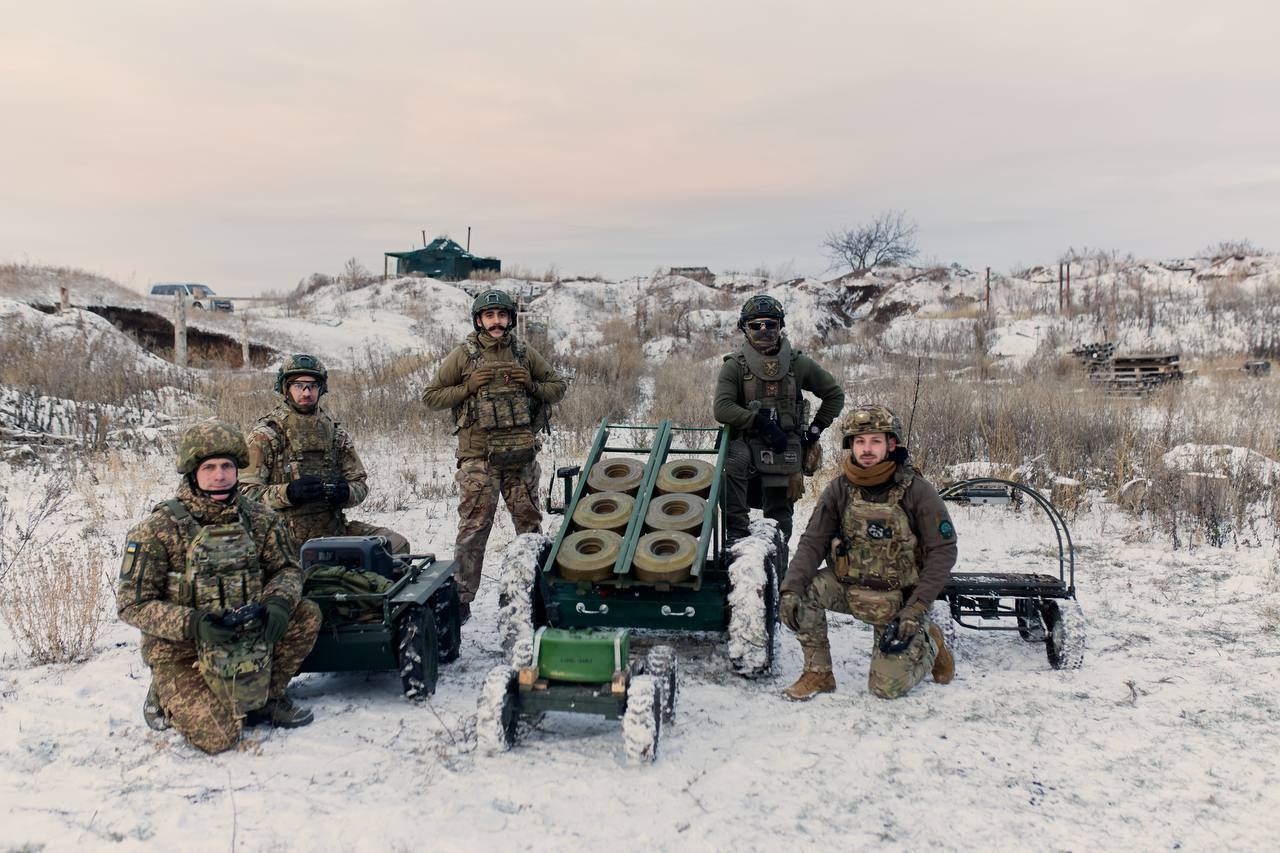
It's probably so touching. I think you can get attached to them, like to a living creature.
That's right. When I was flying the same drone for a month, I really got attached to it. Every day, when it returned from a mission, I serviced it, inspected it, and checked it for damage. It's true, you get very attached to it, as if it were alive.
But you say that there are already enough of them. Are they supplied by the state, purchased by the brigade with its own funds, or donated by volunteers?
We get them in different ways. Volunteers donate some, and recently the brigade organised a fundraiser for two drones — 1.3 million UAH. We've already closed it, and now we're waiting for them to be purchased and delivered to us. The brigade buys some, and there are government supplies. Overall, we're building up a pretty good fleet.
The potential of the GRS is clearly not yet fully realised. In your opinion, what else can be done with their help, what does the future hold? Although they already go on assaults themselves and take prisoners, what more could you want?
I think we need to develop in such a direction that we can shoot down flying drones. They are working on this now. We need machine vision and auto-guidance so that robots can replace mobile air defence groups and shoot down enemy drones. That would be great. We already have drones for fire support, but we also need them for air defence — so that they can be positioned unnoticed on the front line and detect and shoot down enemy UAVs.
We are also considering one improvement for the future — to enable evacuation drones to communicate with the injured person so that they can hear us and we can hear them. Sometimes, there are unexpected situations — for example, we stop and think about how to get around a hole, but the person doesn't understand why we're standing there and worries that something has happened — an accident or something else. So we could tell them that everything is okay and under control. And they could give us some information about the area. So we plan to implement this. Because radios, for example, are not suitable: from the place where we control the drones, they simply don't reach, the distance is too great. Here, digital telemetry can be used more quickly, digital communication. In general, the future of the GRS is machine vision.







